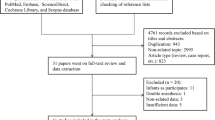Abstract
Aim
Today, in inguinal hernia repair, postoperative pain and costs are regarded as equally important issues as technique and recurrence rates. Postoperative pain is thought to vary according to the applied anesthesia method. As local anesthesia is reported to inflict less pain, its effects on early period post-operative complications should also be evaluated.
Methods
Two hundred patients, on whom Lichtenstein tension free hernia repair had been performed due to unilateral inguinal hernia between March 2004 and July 2005, were prospectively examined. The patients were randomized according to the anesthesia applied. They were divided into two groups: local anesthesia (LA) and spinal anesthesia (SA). The early post-operative complications, post-operative pain scores, and operation durations of the patients, were evaluated.
Results
Local anesthesia was found not to increase the post-operative complications; on the contrary, it was shown to prevent the complications of spinal anesthesia. Although visual analogue pain score (VAS) values at 4, 8, 12, and 24 h post-operation were found to be lower than the SA group, the difference between was not significant. Also, it was discovered that LA did not retard the operation duration.
Conclusion
Local anesthesia reduces post-operative pain and facilitates patients’ mobilization and discharge along with decreasing the early post-operative complications. Thus, LA is a safe and advantageous method to be applied in inguinal hernia repair.
Similar content being viewed by others
References
Lichtenstein IL, Shulman AG (1986) Ambulatory outpatient hernia surgery. Including a new concept, introducing tension-free repair. Int Surg 71:1–4
Kark AE, Kurzer MN, Belsham PA (1998) Three thousand one hundred seventy-five primary inguinal hernia repairs: advantages of ambulatory open mesh repair using local anesthesia. J Am Coll Surg 186:447–455
Amid PK, Shulman AG, Lichtenstein IL (1996) Open tension-free repair of inguinal hernias: the Lichenstein technique. Eur J Surg 162:447–453
Bendavid R (1997) Symposium on the management of inguinal hernias. 4. The Shouldice technique: a canon in hernia repair. Can J Surg 40:199–207
Callesen T, Bech K, Kehlet H (2001) One thousand consecutive inguinal hernia repairs under unmonitored local anaesthesia. Anesth Analg 93:1373–1376
Kingsnorth AN, Porter C, Bennett DH (2000) The benefit of a hernia service in a public hospital. Hernia 4:1–5
Nordin P,Haapaniemi S, Linden WD, Nilsson E (2004) Choice of anesthesia and risk of reoperation for recurrence in groin hernia repair. Ann Surg 240:187–192
Amid PL, Shulman AG, Lichtenstein IL (1994) Local anesthesia for inguinal hernia repair. Step-by-step procedure. Ann Surg 220:735–737
Amid PK (2004) Lichtenstein tension-free hemioplasty: its inception, evolution, and principles. Hernia 8:1–7
Callesen T, Bech K, Nielsen R, Andersen J, Hesselfeldt P, Roikjaer O et al (1998) Pain after groin hernia repair. Br J Surg 85:1412–1414
Rutkow IM (1995) The recurrence rate in hernia surgery: How important is it? Arch Surg 130:575–576
Mokete M, Earnshaw JJ (2001) Evolution of an inguinal hernia surgery practice. Postgrad Med J 77:188–190
Hair A, Duffy K, McLean J, Taylor S, Smith H, Walker A et al (2000) Hernia repair in Scotland. Br J Sur 87:1722–1726
Teasdale C, McCrum AM, Williams NB, Horton RE (1982) A randomised controlled trial to compare local with general anaesthesia for short-stay inguinal hernia repair. Ann Roy Coll Surg Eng 64:238–242
Young DV (1987) Comparison of local, spinal and general anesthesia for inguinal herniorrhaphy. Am J Surg 153:560–563
Peiper C, Tons C, Schippers E, Busch F, Schumpelick V (1994) Local versus general anesthesia for Shouldice repair of the inguinal hernia. World J Surg 18:912–916
Makuria T, Alexander-Williams J, Keighley MRB (1979) Comparison between general and local anaesthesia for repair of groin hernias. Ann Roy Coll Surg Engl 61:291–294
Behnia R, Hashemi F, Stryker SJ, Ujiki GT, Poticha SM (1992) A comparison of general versus local anesthesia during inguinal herniorrhaphy. Surg Gynecol Obstet 174:277–280
Ozgun H, Kurt MN, Kurt İ, Cevikel MH (2002) Comparison of local, spinal and general anesthesia for inguinal herniorrhaphy. Eur J Surg 168:455–459
Olshansky SJ (1997) The demography of aging. In: Cassel CK, Cohen HJ, Larson EB et al (eds) Geriatric medicine. Springer, Berlin Heidelberg New York, pp 29–36
Gianetta E, de Cian F, Cuneo S, Friedman D, Vitale B, Marinari G et al (1997) Hernia repair in elderly patients. Br J Surg 84:983–985
Nehme AE (1983) Groin hernias in elderly patients. Management and prognosis. Am J Surg 146:257–260
Ryan JA, Ayde BA, Jolly PC, Mulroy MF (1984) Outpatient inguinal herniorrhaphy with both regional and local anesthesia. Am J Surg 148:313–316
Tingwald GR, Cooperman M (1982) Inguinal and femoral hernia repair in geriatric patients. Surg Gynecol Obstet 154:704 –706
O’Dwye PJ, Serpell MG, Millar K, Paterson C, Young D, Hair A et al (2003) Local or general anesthesia for open hernia repair: a randomized trial. Ann Surg 237:574–579
Bendavid R (1994) Seromas and prostheses, Part I. In: Bendavid R (ed) Prostheses and abdominal wall hernias. RG Landes, Austin, pp 367–369
Author information
Authors and Affiliations
Corresponding author
Additional information
An erratum to this article is available at http://dx.doi.org/10.1007/s10029-007-0213-8.
Rights and permissions
About this article
Cite this article
Gultekin, F.A., Kuruahvecioglu, O., Karamercan, A. et al. A prospective comparison of local and spinal anesthesia for inguinal hernia repair. Hernia 11, 153–156 (2007). https://doi.org/10.1007/s10029-006-0166-3
Received:
Accepted:
Published:
Issue Date:
DOI: https://doi.org/10.1007/s10029-006-0166-3




